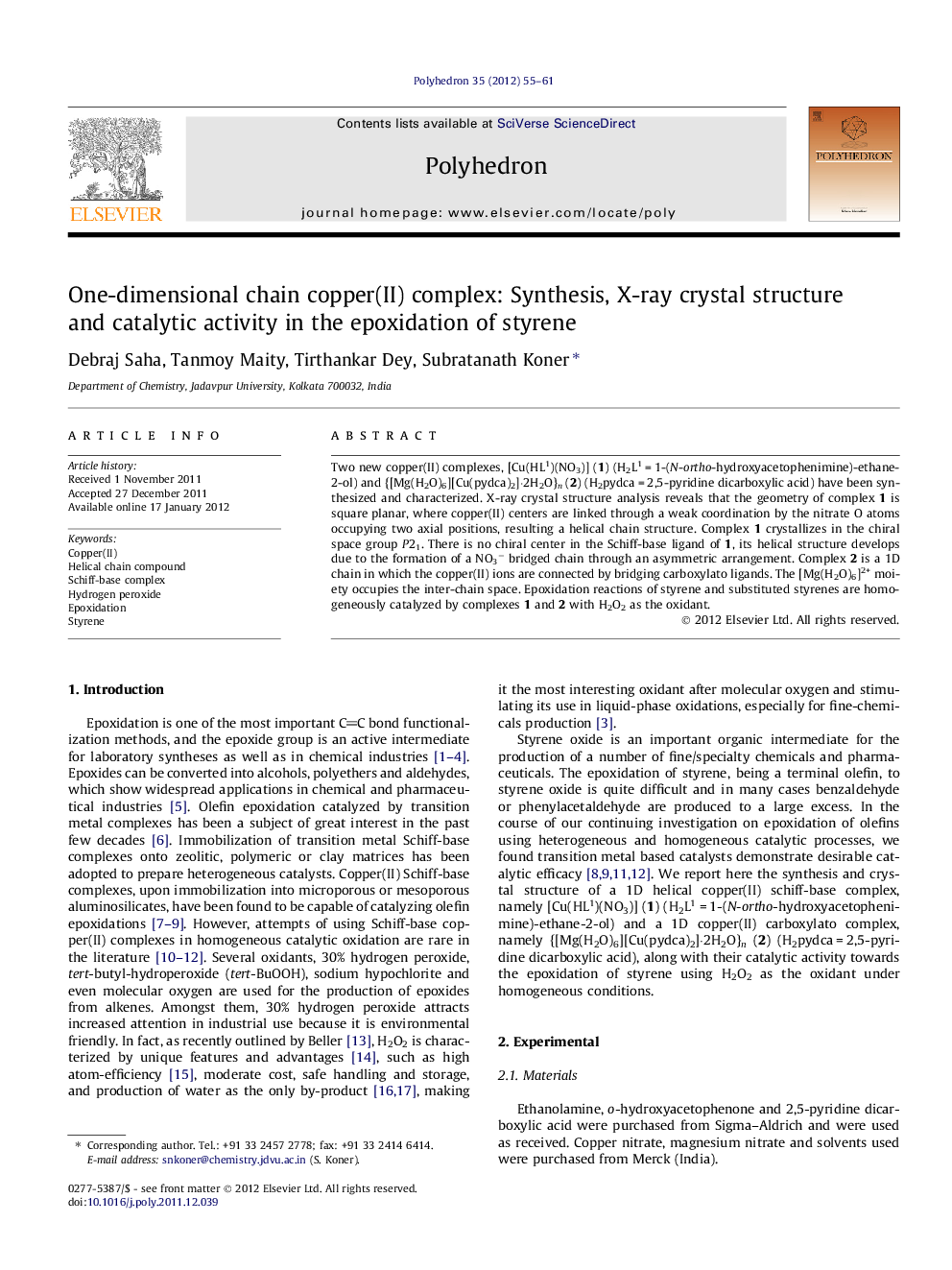| Article ID | Journal | Published Year | Pages | File Type |
|---|---|---|---|---|
| 1337798 | Polyhedron | 2012 | 7 Pages |
Two new copper(II) complexes, [Cu(HL1)(NO3)] (1) (H2L1 = 1-(N-ortho-hydroxyacetophenimine)-ethane-2-ol) and {[Mg(H2O)6][Cu(pydca)2]·2H2O}n (2) (H2pydca = 2,5-pyridine dicarboxylic acid) have been synthesized and characterized. X-ray crystal structure analysis reveals that the geometry of complex 1 is square planar, where copper(II) centers are linked through a weak coordination by the nitrate O atoms occupying two axial positions, resulting a helical chain structure. Complex 1 crystallizes in the chiral space group P21. There is no chiral center in the Schiff-base ligand of 1, its helical structure develops due to the formation of a NO3− bridged chain through an asymmetric arrangement. Complex 2 is a 1D chain in which the copper(II) ions are connected by bridging carboxylato ligands. The [Mg(H2O)6]2+ moiety occupies the inter-chain space. Epoxidation reactions of styrene and substituted styrenes are homogeneously catalyzed by complexes 1 and 2 with H2O2 as the oxidant.
Graphical abstractThe reaction of H2L1 (1-(N-ortho-hydroxyacetophenimine)-ethane-2-ol) with Cu(II) nitrate in methanol formed a square planar complex, [Cu(HL1)(NO3)]n, where copper(II) centers are linked through the weak coordination of O atoms of the nitrate groups in two axial positions, thereby resulting in a helical chain structure. The reaction of 2,5-pyridine dicarboxylic acid (H2pydca) with Cu(II) nitrate under hydrothermal conditions and in the presence of Mg(II) nitrate formed a 1D ribbon-like chain, {Mg(H2O)6[Cu(pydca)2]·2H2O}n. Both compounds were characterized structurally and were tested as catalysts for the oxidation of styrenes using H2O2 as an oxidant under homogeneous conditions.Figure optionsDownload full-size imageDownload as PowerPoint slideHighlights► The structures of two new 1D copper(II) compounds are determined by X-ray crystallography. ► [Cu(HL1)(NO3)]n features a one-dimensional helical structure. ► {[Mg(H2O)6][Cu(pydca)2]·2H2O}n shows a ribbon-like chain structure. ► Both the compounds catalyze the epoxidation of styrene with the use of H2O2.
